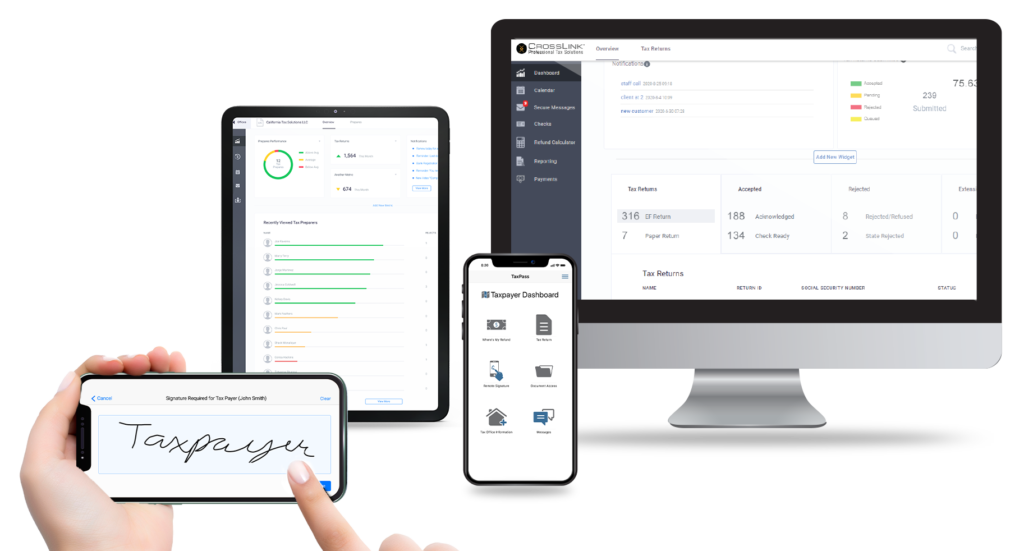As part of its wider effort to increase security, the IRS is reminding taxpayers that the IRS Identity Protection PIN Opt-In Program is available to all taxpayers who can verify their identity. By obtaining an IP PIN a taxpayer can get extra protection when filing their 2022 federal return.
Since all individuals are now eligible to request an Identity Protection PIN (IP PIN), tax preparers may want to encourage their clients to get one in order to help the IRS verify that the federal return that they are filing is truly the taxpayer’s return and thus lessen the chance that the taxpayer will receive a notice from the IRS asking them to verify their identity.
Here are a few key things to know about the IP PIN Opt-In program:
- It is voluntary
- Each individual must pass an identity verification process
- An IP PIN is valid for one calendar year which means an individual will receive a new one each year
- Once an individual receives an IP PIN, the IP PIN must be entered on their federal return to avoid rejections and delays in processing the return.
- Spouses and dependents are eligible for an IP PIN
- Once an individual receives an IP PIN, they can view what their IP PIN is by logging into the Get an IP PIN application tool.
What is an Identity Protection PIN?
The Identity Protection PIN (IP PIN) is a six-digit code known only to the taxpayer and to the IRS. The IP PIN helps prevent identity thieves from filing fraudulent tax returns using a taxpayer’s personally identifiable information. It allows the IRS to verify that the federal return that is being filed is truly the taxpayer’s. An IP PIN is only used on individual Forms 1040, 1040-PR and 1040-SS.
If an individual is assigned an IP PIN, they must use it to confirm their identity on any individual federal return filed during the current calendar year. This includes amended as well as prior year delinquent returns.
An individual will receive a new IP PIN each year from the IRS.
Who can get an IP PIN?
Any individual who has an SSN or ITIN is eligible to get an IP PIN including a Spouse or dependent of the taxpayer. Most individuals will be able to obtain an IP PIN using the Get an IP PIN tool on the IRS website. However, individuals whose adjusted gross income is above $73,000 ($146,000 for MFJ) that wish to get an IP PIN will need to complete Form 15227 or make an appointment at an IRS Taxpayer Assistance Center to verify their identity before they will be issued an IP PIN.
For more details, see the “Alternatives to the online tool” section of the Get an Identity Protection PIN page on the IRS website.
An individual can request an IP PIN in the following ways:
Online
Individuals that had an AGI of less than $73,000 (less than $146,000 for MFJ) on their most recent federal return may request an IP PIN using the Get an IP PIN tool on the IRS website. Once they complete the verification process, an IP PIN will be issued while they are online and the individual may use it to file their federal tax return in the current filing season.
In order to access the IP PIN tool on the IRS website, each individual will go through the IRS Secure Access Digital Identity authentication process to verify their identity. With the new IRS authentication process, the vast majority of individuals should be able to authenticate themselves and be able to obtain an IP PIN via the IRS online tool.
For those individuals who cannot successfully validate their identity they will either need to complete Form 15227 or make an appointment at an IRS Taxpayer Assistance Center to verify their identity.
Form 15227
Individuals with an AGI less than $73,000 can obtain an IP PIN by completing and mailing or faxing Form 15227 (Application for an Identity Protection Identification Number) to the IRS.
The IRS assistor will use the telephone number that is provided on the Form 15227 to call the individual and validate their identity. After their identity is validated, they will be placed in the IP PIN program and assigned an IP PIN for the next filing season. The assigned IP PIN will be mailed to the individual in December or January.
For more details, see the “Alternatives to the online tool” section of the Get an Identity Protection PIN page on the IRS website.
In Person
Individual’s that are unable to verify their identity online or with the Form 15227 process, may obtain an IP PIN by making an appointment for an in-person meeting at a local IRS Taxpayer Assistance Center. At their appointment the individual will verify their identity in person and their assigned IP PIN will be mailed to them within three weeks. They may use the PIN when filing their federal tax return during the current filing season.
For more details, see the “Alternatives to the online tool” section of the Get an Identity Protection PIN page on the IRS website.
New IP PIN Each Year
An IP PIN is valid for one calendar year. Each year the IRS will inform the individual what their new IP PIN for the upcoming year is by sending them a CP01A notice in December or January by mail.
CP01A notices
The CP01A notice informs individuals who have been assigned an IP PIN what their IP PIN will be for the coming calendar year.
The letter also includes instructions on how to use the IP PIN when filing their federal individual income tax return.
How to use a PIN to file taxes
All individuals who are assigned an IP PIN must enter it on their federal individual return. This includes the taxpayer, spouse and any dependent that has been assigned an IP PIN.
If an IP PIN is not entered on the federal return the following will occur:
- For electronic returns – The return will be rejected by the IRS. The IRS will only accept the return if the individual’s IP PIN is present and it is correct.
- For paper returns – The processing of the return will be delayed if the IP PIN is not included on the return or it is incorrect.
eFile
Every taxpayer who received an IP PIN must enter it on an electronically filed return. This includes the primary taxpayer, spouse and dependents.
For dependents that received an IP PIN, the entered IP PIN will be included on the electronic Federal 1040 and if applicable on Form 2441 and Schedule EIC.
Paper Returns
For paper returns, the primary taxpayer and spouse must enter their IP PIN on the federal return if they were assigned an IP PIN.
An IP PIN for a dependent does not have to be entered on paper filed federal return.

FAQ
What if I lose my IP PIN?
Taxpayers who lose their IP PIN, or did not receive the IP PIN for the current tax year in the mail, may retrieve their IP PIN in one of two ways:
- Logging into the Get an IP PIN online tool and requesting to retrieve your IP PINor
- Call the IRS at 800-908-4490, Monday – Friday, 7 am – 7 pm local time. An assistor will verify your identity and mail your IP PIN to your address of record with 21 days.
Is an IP PIN needed?
Although the IP PIN is not needed to file a federal tax return, it is of benefit to the taxpayer to obtain one in order to prevent an identity thief from filing a tax return using their SSN.
Additional IP PIN Resources
For more information on the IP PIN program, see the following on the IRS website:
- IRS News Release of December 1, 2022: Choosing a unique Identity Protection PIN adds extra safety for taxpayers
- IP PIN FAQs
- Publication 5367 – Identity Protection PIN Opt-in Program for Taxpayers
- Get an Identity Protection PIN
- ID.me IRS Help Site – FAQs on how identity verification works
CrossLink Professional Tax Software

CrossLink is the industry’s leading professional tax software solution for high-volume tax businesses. Built based on the needs of busy tax offices and mobile tax preparers that specialize in providing their taxpayer clients with fast and accurate tax returns, CrossLink has been a trusted software solution since 1989. CrossLink’s in-depth tax calculations, advanced technological features, and paperless solutions allow you to prepare the most complicated tax returns with confidence and ease while providing your customers an unparalleled experience.







